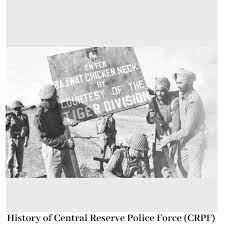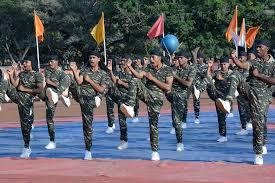CRPF: Safeguarding India Through Service and Dedication
The Central Reserve Police Force (CRPF) is one of India's largest paramilitary forces, established in 1939 under the CRPF Act. It operates under the jurisdiction of the Ministry of Home Affairs, Government of India. The CRPF plays a crucial role in maintaining internal security and law and order in various parts of the country, including conflict zones and areas affected by insurgency and terrorism.

History
The CRPF was initially formed as the Crown Representative's Police in 1939, serving as a central armed police force to assist state police in maintaining internal security. It was renamed the Central Reserve Police Force in 1950. Since its inception, the CRPF has been involved in various operations, including counter-insurgency, disaster management, and peacekeeping missions.
Mission and Objectives
The primary mission of the CRPF is to:
- Maintain internal security and public order.
- Assist in counter-insurgency operations and anti-terrorism activities.
- Provide security for important persons and vital installations.
- Aid in disaster relief and emergency response.
Organization and Structure
The CRPF is structured into various sectors and units to address different operational needs:
- Director General (DG): The head of the CRPF, responsible for overseeing the force's operations and administration.
- Deputy Inspector General (DIG): Senior officers who manage regional operations and oversee subordinate units.
- Commandants: Lead battalions and specialized units, managing field operations and day-to-day activities.
Key Functions and Responsibilities
Counter-Insurgency Operations: The CRPF plays a significant role in operations against insurgents and extremists, particularly in regions like Jammu and Kashmir and the northeastern states.
Public Order Management: The force is deployed to manage large gatherings, riots, and civil disturbances, ensuring public safety and order.
VIP Protection: The CRPF provides security to high-profile individuals, including politicians and foreign dignitaries.
Disaster Response: The force is involved in disaster relief operations, providing assistance during natural calamities and emergencies.

Training and Development
CRPF personnel undergo rigorous training to prepare for diverse operational roles. Training includes:
- Basic Training: Focuses on fundamental skills, including weapon handling, physical fitness, and law enforcement procedures.
- Specialized Training: Provides advanced skills for handling specific tasks such as counter-insurgency operations, riot control, and disaster management.
Achievements and Notable Operations

- Operation Blue Star (1984): CRPF played a key role in supporting the Indian Army during this operation aimed at removing militants from the Golden Temple in Amritsar.
- Counter-Terrorism Efforts: The CRPF has been instrumental in combating terrorism in Jammu and Kashmir, with significant contributions to reducing militant activities.
- Disaster Relief Operations: The force has provided critical support during natural disasters, including the 2004 Tsunami and the 2013 Uttarakhand floods.
Community Engagement and Welfare
The CRPF is involved in various community outreach programs and welfare activities, including:
- Educational Initiatives: Supporting schools and educational programs in remote and conflict-affected areas.
- Health Services: Providing medical assistance and health care in underserved regions.
- Rehabilitation Programs: Assisting in the rehabilitation of displaced individuals and communities affected by conflict and natural disasters.
Conclusion
The Central Reserve Police Force (CRPF) stands as a pillar of internal security and public order in India. Through its dedicated personnel and multifaceted operations, the CRPF continues to play a vital role in safeguarding the nation and supporting community development.
